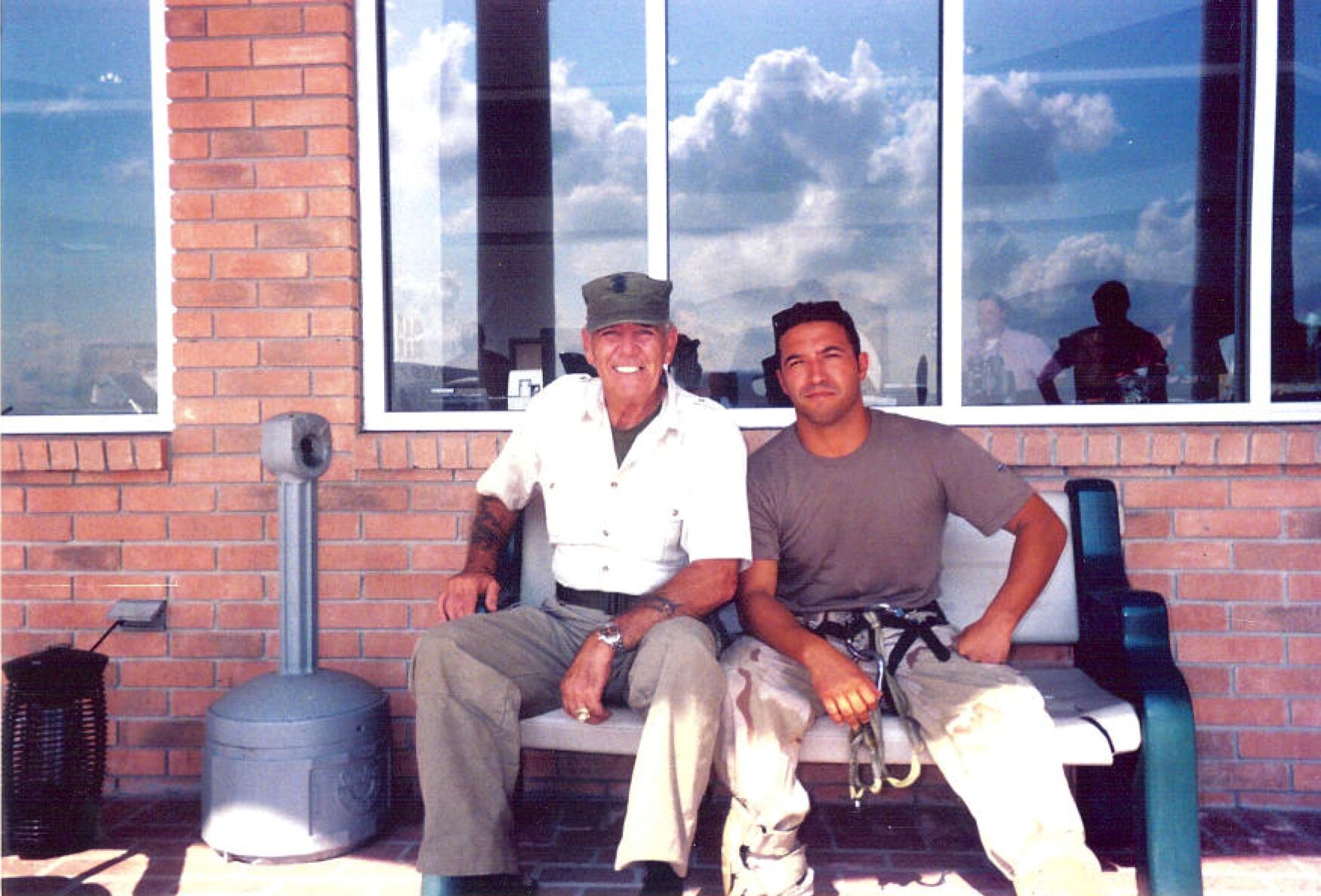For a time, the photo seemed to show up everywhere: on coinage and paper placemats at the base exchange, on phone cards and a magazine cover.
For many who saw it — a little girl in a pink shirt and pigtails, arms flung around the neck of the pararescueman who'd hoisted her from the flooded ruins of her family's New Orleans home — the image depicted the best of the response to the Hurricane Katrina disaster.
It also depicted the heart of a steely profession.
In the nearly 10 years that have gone by, the photo's prominence has faded. But not for the pararescueman pictured.
He wants to find and reconnect with the girl.
CONTACT US: If you have a promising lead, please email Air Force Times Managing Editor Richard Sandza: rsandza@militarytimes.com
Then-Staff Sgt. Mike Maroney had arrived seven days earlier in that devastated city, the latest in a series of disasters that made up what he referred to as his "world devastation tour." But this rescue mission was different, even though Maroney tried to convince himself otherwise.
"These are Americans. Not that they're different from other people," he said. "But they're Americans. I felt closer to them."
Despite seven days of arduous work by Maroney and his fellow service members — descending onto rooftop after rooftop that looked to him like stepping stones spread across the flooded city — he felt helpless.
They'd transported a man suffering from an aortic aneurysm who was unlikely to survive, a comatose woman who, before Maroney lifted her out of her home, had not left her own bed for years. What, he wondered as they dropped her off at New Orleans International Airport with all the other displaced people, would become of her now?
But then there had been the little girl with the brilliant smile who, for a moment, made Maroney forget all the things he couldn't change.
He remembers the descent between treetops and power lines, a precarious hover the helicopter pilot pulled off with expert precision.
Maroney went headfirst down the hoist, righting himself just before dismounting, hands in the air like a gymnast. There stood a family of seven — a mother, father and five children, one no older than 4 or 5, in a pink shirt and pigtails.
He never caught her name.
Maroney took them up one by one. The mother cried. The little girl grinned, fearless.
The pararescueman had two young sons back home in Nevada, where he was assigned to the 58th Rescue Squadron at Nellis Air Force Base. One was about the same age as the girl Maroney now rescued. He had a soft spot for children and they for him; wherever he went in the world, the children tended to gather.
From the helicopter, the little girl excitedly pointed out her home and her school. She reached out to rub her mother's back as the woman cried.
"It's OK," the girl said. "We're safe. Don't worry."
To Maroney, she represented everything the residents of this wrecked and waterlogged city would need in the coming months and years: Strength. Resiliency. Kindness.
When they arrived at the airport, the place where hundreds would be deposited before departing for Houston, Dallas, Atlanta, Memphis and beyond, the girl wrapped her arms around Maroney, pressed her cheek against his and smiled.
All the helplessness Maroney felt fell away. He forgot the crumbled homes and the stench of the flood waters. All the things he'd seen and experienced as a pararescueman — towns torn apart by typhoons, cities shaken by wars and riots — made sense in that moment. This was why he'd chosen to become a member of the service's elite special operations forces, joining the Air Force in 1996 at the age of 20. He'd wanted to spend his life helping people.
"If I never do anything else again, that hug and that smile made it all worthwhile," he said.
Maroney didn't know a combat cameraman had captured the interaction until later that night, when he received several photos from the day. He didn't know how far the image would travel until more than a year later, when he was on a deployment to Iraq. Another airman told Maroney he'd seen the image on military coins handed out as change at the base exchange.
Soon, Maroney said, "it was everywhere, on Burger King placemats and AT&T phone cards." A foundation for fallen rescue airmen — So That Others May Live Foundation — used it on their brochures.
"I didn't expect that," said Maroney, now a civilian pararescue instructor at Joint Base San Antonio-Lackland.
He left active duty in August 2006 and has spent the last eight years in the Air Force Reserve, rising to the rank of master sergeant. He went to war twice after Katrina, to Iraq and Afghanistan.
It was the little girl — her picture still on his wall — that Maroney remembers above all else.
Around 2010, he sent a letter to Oprah Winfrey, believing if anyone could find her and reconnect them, it would be her. But Maroney never heard back.
He has tried on his own since then, circulating the picture online once a year or so in the hope someone might recognize her.
This month, Maroney uploaded a 20-minute video to YouTube recounting the story. He posted a message on the online bulletin board Reddit.com with a link to the image.
He's not sure what he'd say to her if they ever met again. But he wants to know what became of the little girl who made such a big impact.

Master Sgt. Michael Maroney with with R. Lee Ermey of "Full Metal Jacket" at New Orleans International Airport in 2005.
Photo Credit: Courtesy Master Sgt. Michael Maroney





